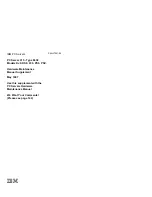
Monitoring the Web Server
Monitoring Your Web Server
2-7
The script is designed to be run by cron (or an equivalent daemon that executes
commands at intervals). To use the script, you must modify the following
configuration variables:
Enabling server status is very useful if an httpd process is not responding, and you
need to identify that process. Operating system utilities such as ps, top, or pmap do
not identify which process is not responding.
For more information on mod_status, see:
http://www.oreillynet.com/pub/a/apache/2000/04/21/wrangler.html
http://www.apache.org/docs/mod/mod_status.html
Table 2–2
Log status script variables
Variable
Value
$wherelog
The pathname of the log file location, for example:
/private/admin/logs/
The script creates a file name, such as: 20010945.
$port
Port number of the server to monitor. The default is 80.
$server
The server host name. The default is localhost.
$request
The server status request with the auto parameter as entered in
the browser, for example:
http://servername:port/server-status?auto
















































